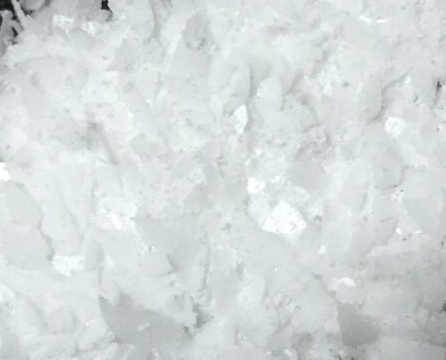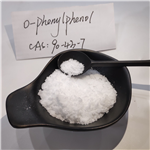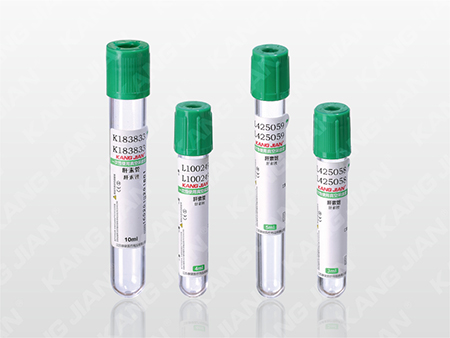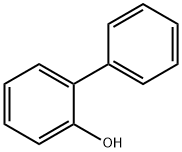The review of 2-phenylphenol
Feb 24,2022
Introduction
2-phenylphenol, also known as 2-hydroxybiphenyl or 2-phenylphenol, is a white or light yellow or light red powder, flakes or blocks, with a faint smell [1]. Melting point 55.5~57.5°C, boiling point 283~286°C (0.1MPa), relative density 1.213(20°C), flash point 123.9°C. Slightly soluble in water, easily soluble in methanol, acetone, benzene, xylene, trichloroethylene, dichlorobenzene and other organic solvents. Sodium ophenyl phenol, short for SOPP, is a white flake or block or light red powder, easily soluble in water.

Picture 1 2-phenylphenol flakes
The application of 2-phenylphenol
Used as the carrier of hydrophobic synthetic fiber, such as chloroprene, dacron, when carrier dyeing method, surfactant, antiseptic, dye intermediate. In Japan, 2-hydroxy-biphenyl and sodium salts are used for mildew control of citrus. In wax mixed with 0.8% of this product, using spray method in the harvest of dried orange, can also be used with biphenyl, can reduce the rot orchid to a minimum. Britain, the United States, Canada allow the use of a wider range of fruits, including apples, pears, pineapples and so on. The product is also used in cosmetics as a preservative. Oral LD50 of 2-hydroxybiphenyl in rats was 2.7-3.0g/kg. It is an organic chemical product with a wide range of uses, widely used in sterilization and anticorrosion, printing and dyeing auxiliaries and surfactants, synthesis of new plastics, resins and polymer materials stabilizer and flame retardant and other fields.
The synthesis of 2-phenylphenol
It can be recovered from the distillation residue of phenol produced by the sulfonation method. The distillation residue of phenol contains about 40% of phenylphenol, and other components are phenol, inorganic salts, water, etc. After vacuum distillation, the mixed phenylphenol fraction is separated, the vacuum degree is 53.3-66.7kPa, and the temperature is intercepted at 65-75°C to above 100°C, but not higher than 1345°C. Then, the difference in solubility of o- and p-hydroxybiphenyl in trichloroethylene was used to separate the two into pure substances. The mixture (mainly 2-hydroxybiphenyl and 4-hydroxybiphenyl) is heated and dissolved in trichloroethylene, after cooling, 4-hydroxybiphenyl crystals are first precipitated, and 4-hydroxybiphenyl is obtained by centrifugal filtration and drying . The mother liquor is washed with sodium carbonate solution, and then dilute alkali solution is added to make 2-hydroxybiphenyl salt. After standing for stratification, the upper layer of 2-hydroxybiphenyl sodium salt is taken and dehydrated under reduced pressure to obtain the sodium salt product. 2-Hydroxybiphenyl sodium salt is a white to reddish powder. It is easily soluble in water, 122g is soluble in 100g of water, and the pH of 2% aqueous solution is 11.1-12.2. Also soluble in acetone, methanol, soluble in glycerol, but insoluble in oil. 2-Hydroxybiphenyl sodium salt can be acidified to obtain 2-Hydroxybiphenyl, both of which are food additives.
The anticorrosion and sterilization of 2-phenyl phenol
Ortho-phenyl phenol in addition to the activity of atrazine and its sodium salt is very high, and has a broad spectrum of sterilization in addition to the ability to mold, and low toxicity, is a good preservative, can be used in the mildew preservation of fruit and vegetables, especially suitable for the mandarin of dry mouldproof, can also be used to deal with lemon, pineapple, melon and fruit, pears, peaches, tomatoes, cucumbers, etc., can make to rot, low limit. Britain, the United States, Canada and other countries are allowed to use a wider range of fruits, including apples and so on. 2-phenyl benzene and its sodium salt as antiseptic fungicide can also be used in cosmetics, wood, leather, fiber and paper, etc., the general use concentration of 0.15-1.5%. The United States Environmental Protection Agency (EPA) allows the use of o-phenylphenol or its sodium salt as the main components of antibacterial soaps, antibacterial deodorant, preservative preservative varieties of nearly 200, and that such products are non-toxic, only in this field of 2-phenylphenol annual consumption is.
Dyeing carrier of 2-phenylphenol synthetic fiber
Ophenyl phenol and its water-soluble sodium salt can be used as the carrier of polyester fiber dye, also can be used as the carrier of hydrophobic synthetic fiber chloroprene, polyester dyeing.
Synthesis of a new flame retardant material containing phosphorus from 2-phenylphenol
Because the polymeric material containing organophosphorus compounds in combustion, will form graphite carbon film on the surface of the material, so that the polymer and air isolation, has good flame retardant performance, high flame retardant efficiency, and low volatility, and will gradually replace the inorganic and halogen containing flame retardant materials used today.
Renference
1 Khodja A A, Sehili T, Pilichowski J F, et al. Photocatalytic degradation of 2-phenylphenol on TiO2 and ZnO in aqueous suspensions[J]. Journal of Photochemistry and Photobiology A: Chemistry, 2001, 141(2-3): 231-239.
- Related articles
- Related Qustion
Heparin sodium is a mixture of asymmetric molecules with different molecular weights, and is a general name for a class of glucosamine sulfate sodium salts.....
Feb 24,2022APIAcetazolamide is a carbonic anhydrase inhibitor. Under normal physiological conditions, the enzyme carbonic anhydrase is responsible for reabsorption of Na+ and excretion of H+ in the PCT of the nephron.....
Feb 24,2022API2-Phenylphenol
90-43-7You may like
- 2-Phenylphenol
-

- $16.70 / 25KG
- 2024-11-14
- CAS:90-43-7
- Min. Order: 25KG
- Purity: 98%
- Supply Ability: 1-20mt
- 2-Phenylphenol
-

- $30.00 / 1kg
- 2024-11-14
- CAS:90-43-7
- Min. Order: 1kg
- Purity: 99%
- Supply Ability: 10 mt
- O-Phenyl phenol
-

- $0.00 / 200kg
- 2024-10-29
- CAS:90-43-7
- Min. Order: 20kg
- Purity: 99%
- Supply Ability: 20 tons






